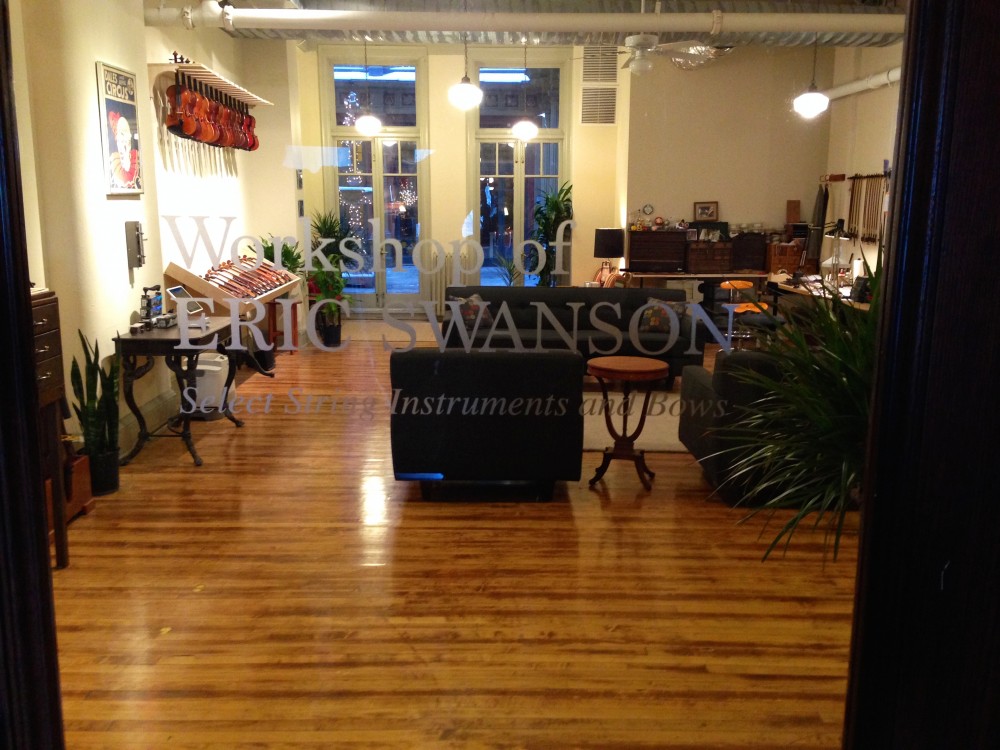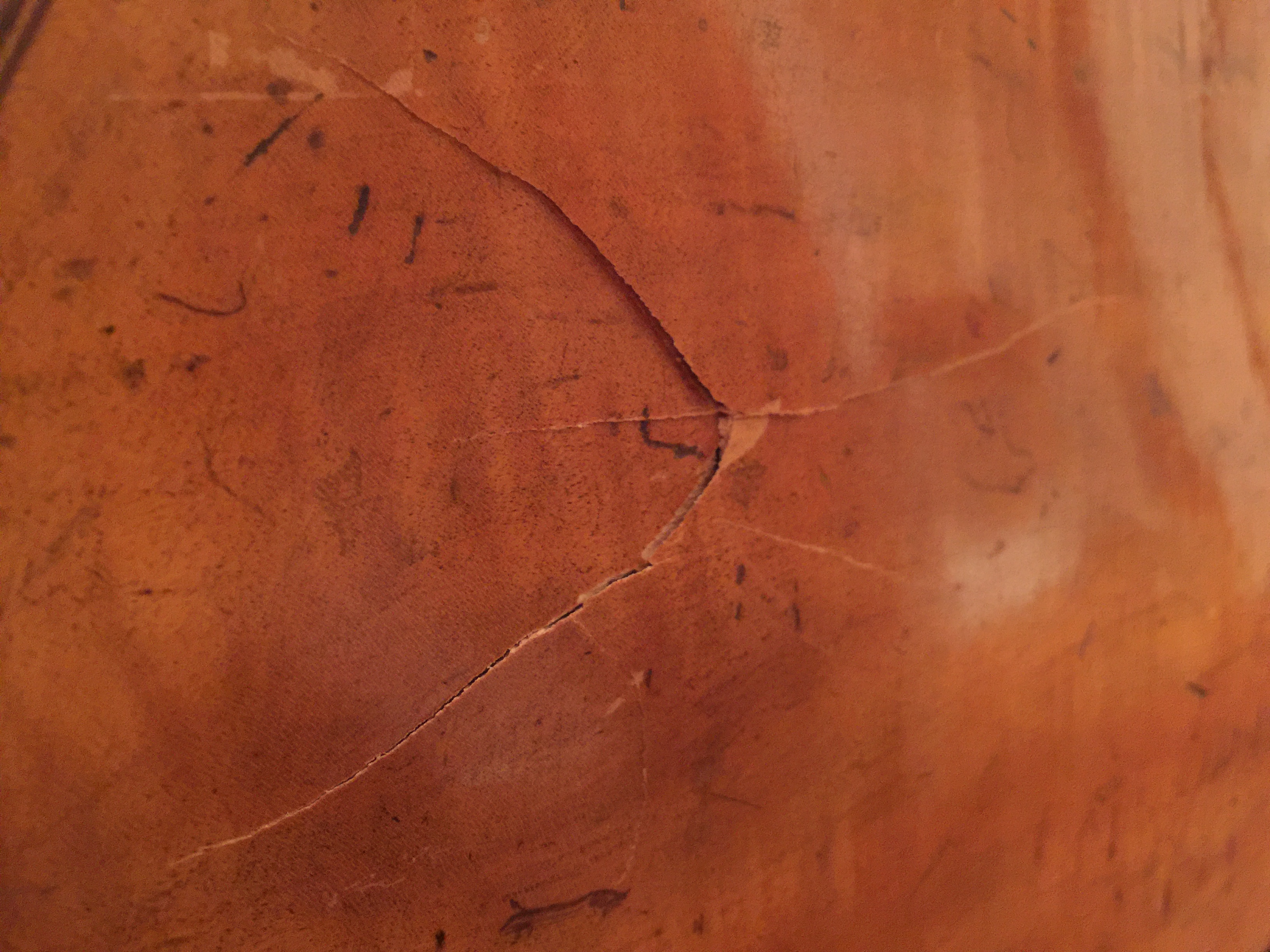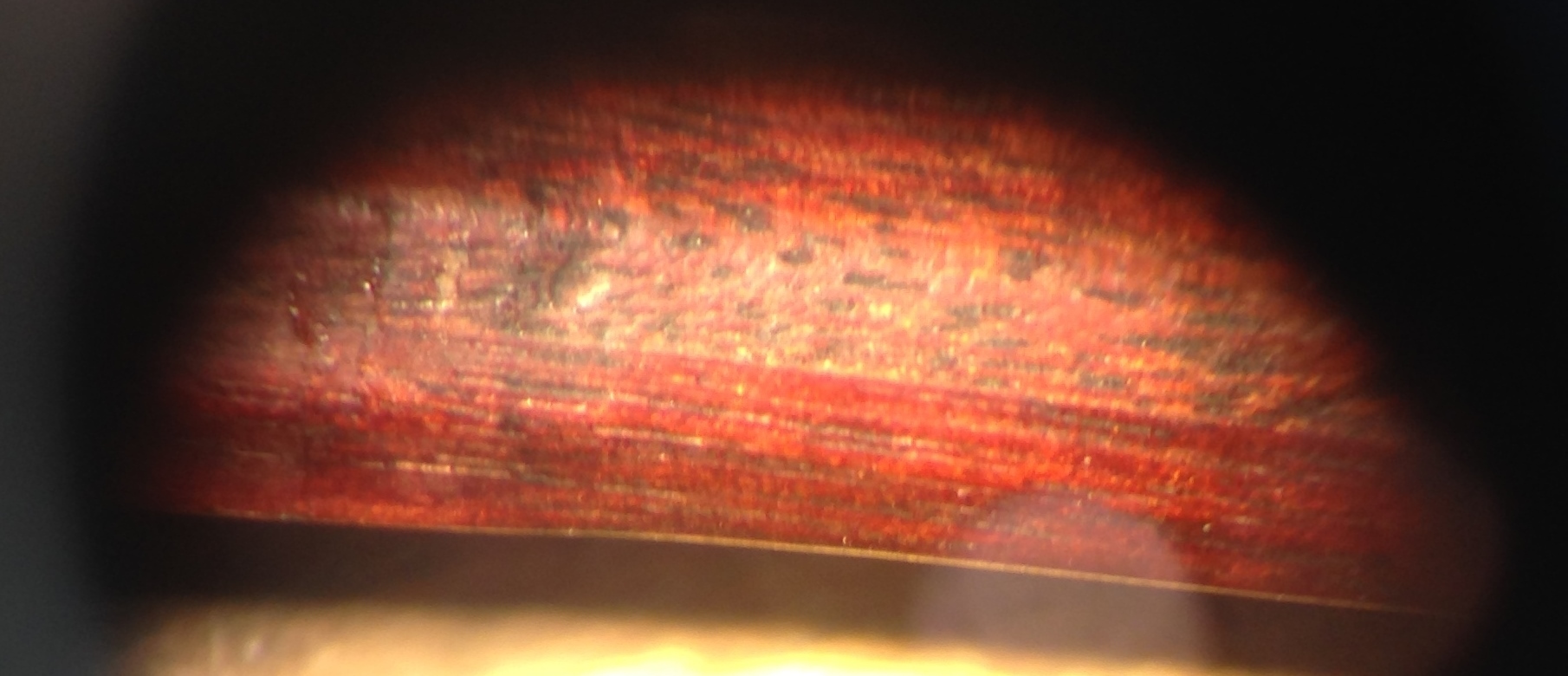
For a number of years, I have been attending the string instrument auctions held in Vichy, France by Vichy Encheres. I’ve written elsewhere on this blog about auctions – how they work, their benefits and dangers, and their role in the economy of the violin business. What I want to do in this post is point out something interesting and unique about the Vichy auctions.
Over the last three years, Vichy has held auctions dedicated to the sale of the collection of the late, great bow expert Bernard Millant. The auction of his personal collection is always sandwiched between two other auctions, one of lower priced instruments and one of “quality” instruments and bows. The result is a three-day auction extravaganza, filled with dealers from around the world crowding around long tables filled with bows and examining walls and walls of instruments. The experience can be exhausting. The sheer volume is overwhelming – the room filled with people with back to back days of auctions running four or more hours. One thing is clear: this has been a very successful enterprise. The popularity of the auction is extraordinary and must be extremely profitable.
The auction is very friendly and well run while the town of Vichy is charming. I have mentioned before that the listing descriptions, especially for bows are the best I’ve seen in the business in their accuracy and technical descriptions. The auction is run by the competent and professional Vichy Encheres staff and by a group of the acknowledged foremost French experts on instruments and bows.
Most auction houses have in-house managers who run the auction. They do the hard work of taking in consignments, creating estimates and damage reports, and crafting lot descriptions. The interesting thing is that these fine people are usually NOT the world’s leading experts in the field, as knowledgeable as they may be. They are usually not craftsmen or makers. They do not write certificates of authenticity. This fact is one of the attractions for dealers – perhaps they see something that the auctioneer missed, maybe they can find a hidden gem or a great deal. This same reality presents one of the greatest dangers for uniformed buyers or players. Most auctions are a buyer beware environment. Read the fine print. The listings are never presented as concrete fact, but are presented as non-binding opinions.
Tarisio, with offices in London and New York, really pioneered the effort to bring auctions directly to musicians, doing an end-run around dealers and shops. They have done so with great success. Many instruments and bows in their auctions sell at high or low retail prices. Because most dealers and shops usually offer certificates (usually written by others) or at least stand behind the instruments they sell, Tarisio offered something unique in the auction field: if you bought an item that subsequently came into question as to its authenticity, Tarisio would have independent experts who write certificates look at the item. If these experts decide not to certify the bow or instrument, Tarisio would take it back. At least one of my clients went through this procedure with several bows. I have also written about this in other posts.
So, what is unique about Vichy? Although I can find no official mention of this policy on their website or other promotional literature, and I don’t have the “fine print” of the policy, they offer certificates on every bow they sell. The certificates come from none other than Raffin and his associates – who, after the passing of Millant, are now considered the world’s foremost experts on French bows. They also oversee the bow portion of the auctions. They are available to answer questions during the viewings and actually take part in the auctions themselves, reading the item descriptions as the auctioneer manages the bids. The last astounding fact is that the certificates are free of charge – included in the purchase price of the bow. Simply send them your receipt and they will send you the certificate.
In a market where questions of authenticity play a central role in pricing and where most shop owners and dealers are not necessarily experts at identification, there is heavy demand for and a reliance on certificates of authenticity. This is the brilliance of the Vichy Encheres economic model. They supply mountains of vintage French violins and bows of every quality and description to a global market that craves their industry certified product. It is unique and unprecedented.
So, why don’t more musicians take advantage of this opportunity? The prices at Vichy are wholesale and represent a great deal compared to shops and fancy dealers. There are excellent French instruments and bows available at every auction. There are several problems for musicians, however. First, you must travel to France. Secondly, as with every auction, you may not win the item you want – one must always be prepared for this fact at an auction and maintain bidding discipline. Thirdly, Vichy Encheres, while it treats musicians superbly, is not really set up as a player’s auction. Many of the instruments and bows are not set up to play and you only have a short time to test and play them if they are playable. The number of items on display can be too much to handle. The conditions for testing the bow or instrument you might be interested in are not ideal – in the middle of a cavernous rooms filled with middle aged men jostling for access.
So, there you have it. Vichy Encheres in Vichy France represents one of the most unique auctions in the world. I hope this article has given you some insight to the world of violin auctions and will help you, whether shop owner or musician.
NOTE: Regarding instruments, the auction is overseen by Rampal, but I do not at the time of this writing, have confirmation that he supplies certificates free of charge as well, although I can only assume that this is the fact.
UPDATE: I understand that free certification for violins and bows is available only at the auctions where the experts actually attend – in other words, the sales of “quality” instruments and bows.
If you want more information on auctions, please read some of my older posts on the auctions, expertise and certificates:
https://swansonbows.wordpress.com/2014/04/06/on-auctions/
https://swansonbows.wordpress.com/2014/04/06/on-experts-and-expertise/
https://swansonbows.wordpress.com/2014/04/06/on-certificates/
https://swansonbows.wordpress.com/2014/08/20/j-a-beare-starting-online-auction/
https://swansonbows.wordpress.com/2016/09/22/the-craft-of-the-connoisseur/
https://swansonbows.wordpress.com/2016/11/04/state-of-the-market-preview/
https://swansonbows.wordpress.com/2018/01/29/vichy-auction-report-2017/


